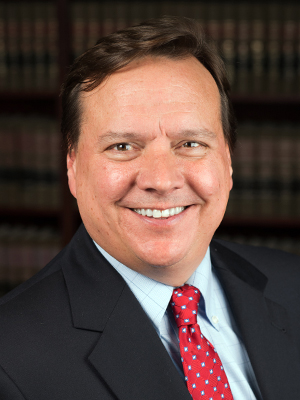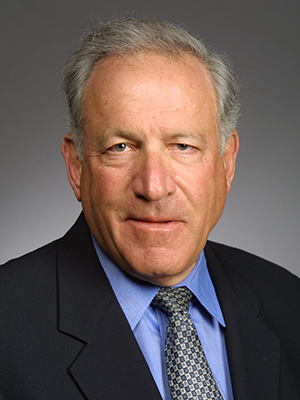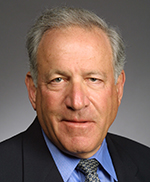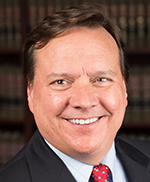March 15, 2017 – What makes a successful State Bar president? How can a leader best serve a diverse membership? Where would you focus your energy? The candidates vying for the State Bar of Wisconsin’s president-elect post have answers.
Madison lawyers Christopher Rogers of Habush Habush & Rottier, S.C. and John Axelrod of Dewitt Ross & Stevens S.C. recently responded to questions that shed light on what the two might do if elected to lead the State Bar.
Ballots will be mailed by April 14, as well as election ballots for the State Bar Board of Governors, State Bar treasurer, and a Judicial Council representative. Learn more about all the candidates at the State Bar’s elections page.
The winner of the 2017 president-elect position will serve a one-year term, starting July 1, before serving a one-year term as State Bar president.
In your opinion, what makes a successful State Bar president? In other words, how must a president lead to ensure the State Bar is moving in the right direction?
 Rogers: A successful State Bar president must have the expertise, energy, and passion to do the job, and must be a vocal advocate for the members of the organization. She or he needs to possess a high level of competence and an understanding of the complex makeup of our membership and of the State Bar itself, including its fiscal budget, mission statement, and programs. A president needs to appreciate the struggles and issues facing our members in their day-to-day practice.
Rogers: A successful State Bar president must have the expertise, energy, and passion to do the job, and must be a vocal advocate for the members of the organization. She or he needs to possess a high level of competence and an understanding of the complex makeup of our membership and of the State Bar itself, including its fiscal budget, mission statement, and programs. A president needs to appreciate the struggles and issues facing our members in their day-to-day practice.
They must lead by being a lobbying voice for our members. A successful State Bar president must make certain that the State Bar has a clear understanding of the needs of its members, and that it serves them in an efficient and fiscally responsible manner. A president must assure that the State Bar does everything in its power to support the practice of law and to create a competitive advantage for its members.
 Axelrod: A successful State Bar president should possess four key attributes. First, the president should be a good listener, learning from others and developing solutions through cooperation and consensus. The president should have the humility and wisdom to rely on the skill and knowledge of others.
Axelrod: A successful State Bar president should possess four key attributes. First, the president should be a good listener, learning from others and developing solutions through cooperation and consensus. The president should have the humility and wisdom to rely on the skill and knowledge of others.
Second, the president should be collegial and engaging, encouraging members, other bar leaders, and staff to contribute their best ideas and qualities to the organization. Third, the president should be creative, bringing a personal vision and new ideas to the State Bar.
Finally, the president should have the experience, commitment, and courage to keep the organization moving forward. The president should not hesitate to speak out on important issues regarding our profession and the administration of justice.
The State Bar has about 25,000 members, 24 sections, and 4 divisions. How can the State Bar best serve a membership with such diverse needs and different challenges?
 Axelrod: Good communication is essential. The first step requires gaining a better understanding of the diverse needs and challenges of our membership, the differences and the commonalities. A well-designed survey that digs into the real concerns of our members should be done as soon as reasonably possible. For example, is our organization effectively serving our government lawyers, sole practitioners, and in-house counsel? Or is our organization too focused on law firms?
Axelrod: Good communication is essential. The first step requires gaining a better understanding of the diverse needs and challenges of our membership, the differences and the commonalities. A well-designed survey that digs into the real concerns of our members should be done as soon as reasonably possible. For example, is our organization effectively serving our government lawyers, sole practitioners, and in-house counsel? Or is our organization too focused on law firms?
Second, changes may need to be implemented. The results of the survey are likely to suggest some changes in both structure and program offerings. The present structure already recognizes that we cannot be a one-size-fits-all organization, but further refinements are likely necessary.
 Rogers: Communication and transparency are key. The State Bar must take advantage of and partner closely with its sections and divisions. The bar is here for us, so member services coordinators must meet with law firms and lawyers, as well as government agencies and law schools, to identify and discuss specific practice challenges. There are opportunities for the State Bar’s membership communication to become more efficient and responsive. Technological upgrades are due and, if implemented wisely, can streamline our access to member services, legislative initiatives, and the body of knowledge that the bar has curated.
Rogers: Communication and transparency are key. The State Bar must take advantage of and partner closely with its sections and divisions. The bar is here for us, so member services coordinators must meet with law firms and lawyers, as well as government agencies and law schools, to identify and discuss specific practice challenges. There are opportunities for the State Bar’s membership communication to become more efficient and responsive. Technological upgrades are due and, if implemented wisely, can streamline our access to member services, legislative initiatives, and the body of knowledge that the bar has curated.
State Bar Elections
For information on all State Bar elections, visit the State Bar’s elections page, which includes candidate bios and platform statements.
Officer Candidates
Learn more about the candidates for the State Bar officer positions of President-elect, Treasurer, and Judicial Council. State Bar Elections: Officers.
Board of Governors' Candidates
Learn more about all the candidates for the State Bar’s Board of Governors. State Bar Elections: Board of Governors.
If there was just one problem you could help fix or one goal you could help achieve, where would you focus your energy as State Bar president?
 Rogers: In a word: Access. There are many important issues facing our members and our profession. One main issue that touches upon our professional mission to the people of Wisconsin is access to justice and to legal services, both in the criminal and civil arenas.
Rogers: In a word: Access. There are many important issues facing our members and our profession. One main issue that touches upon our professional mission to the people of Wisconsin is access to justice and to legal services, both in the criminal and civil arenas.
To elaborate, the lack of funding for our courts, the judiciary, and its employees is an ongoing issue that directly affects the citizens of this state. The State Bar must advocate and lobby for appropriate funding to support our justice system. Further, the State Bar’s history of supporting pay progression for our public prosecutors needs to strengthen. This also needs to extend to our public defenders, who have not seen an increase in the private bar rate in decades. In this regard, the State Bar must be a stronger and more effective lobbying voice and advocate.
If we are making a very short list of priorities, I must add that we have to be committed to assuring the competent and professional delivery of legal services for our community and the public. There is certainly no entity better suited to accomplish this critical goal than the State Bar.
 Axelrod: I want to improve the State Bar so that it is more responsive, effective, and appealing to all lawyers, including those who would not join if membership was not mandatory. Because of declining law school enrollment, there will be fewer dues-paying members. Therefore, it will be particularly important to improve our service to members and make our programs more focused and meaningful.
Axelrod: I want to improve the State Bar so that it is more responsive, effective, and appealing to all lawyers, including those who would not join if membership was not mandatory. Because of declining law school enrollment, there will be fewer dues-paying members. Therefore, it will be particularly important to improve our service to members and make our programs more focused and meaningful.
Where do you see the future of the legal profession heading and what can the State Bar do to best prepare its members for the future?
 Axelrod: I see the legal profession challenged from several different directions.
Axelrod: I see the legal profession challenged from several different directions.
The administration of justice faces enormous challenges. The State Bar should continue to be a progressive force to make our civil and criminal justice system more fair and our judiciary more independent. In Wisconsin, for example, we must persuade the Legislature to provide the necessary funds for the administration of justice. Fair pay for assistant district attorneys, public defenders, and assigned counsel is long overdue. Law clerks should be available to all trial judges, as in Minnesota and the federal system. Respect for the rule of law must be promoted. The lack of civility displayed by a very small percentage of attorneys remains a problem that needs to be addressed.
As a result of technology, the practice of law has changed dramatically and will continue to change. While many attorneys have already adapted, CLE courses in technology should continue to be available to assist in the learning of these skills and should be continuously updated as changes occur. I support CLE credit for technology courses. Perhaps CLE credits should even be required for technology courses just as they are for legal ethics courses.
In addition, our profession must fairly regulate online services such as Legal Zoom, which are a result of technology as well. There must be competency standards for online services and legal ethics rules should know no boundaries.
Further, we need to promote expanded opportunities for mentoring new attorneys. CLE credit should be awarded to both the mentor and the new attorney, just as certain pro bono activities now receive CLE credit.
Finally, the State Bar should encourage recent law school graduates to practice in underserved areas of Wisconsin. Programs could provide funding to forgive law school loans and match new attorneys with those who are retiring. For example, in Minnesota, some law clerks assigned to rural areas of that state have remained and have become practicing attorneys in underserved areas.
 Rogers: The future of our legal profession is changing. We will have fewer lawyers practicing in our northern counties and fewer lawyers graduating from law school. We need to work with local firms along with law schools to help bridge the gap between legal needs and young lawyers finding employment. The commercialization of our profession will continue to increase as corporate entities like Legal Zoom and other internet sites invade our areas of practice. They do so with very little regulation.
Rogers: The future of our legal profession is changing. We will have fewer lawyers practicing in our northern counties and fewer lawyers graduating from law school. We need to work with local firms along with law schools to help bridge the gap between legal needs and young lawyers finding employment. The commercialization of our profession will continue to increase as corporate entities like Legal Zoom and other internet sites invade our areas of practice. They do so with very little regulation.
The State Bar is uniquely situated to address these collective issues, to be a legislative advocate and a lobbying voice for our members. We need to drive competitive advantage for our members. The State Bar has to be efficient and streamlined to deal with these issues. It must be technologically savvy so that our members can access programs and educational opportunities anywhere, with ease. The State Bar must be strategic and target specific services and programming to reach the actual areas of need for our members.
Finish this question in 30 words or less: I am the best person to lead the State Bar because…
 Rogers: I understand the challenges facing our lawyers and have the skill to manage the complexities of the bar. I will work tirelessly to bring value and service to our members.
Rogers: I understand the challenges facing our lawyers and have the skill to manage the complexities of the bar. I will work tirelessly to bring value and service to our members.
 Axelrod: I have the experience and commitment. My opponent and I are both well-qualified. I will work tirelessly for you just as I have done for clients throughout my career.
Axelrod: I have the experience and commitment. My opponent and I are both well-qualified. I will work tirelessly for you just as I have done for clients throughout my career.
